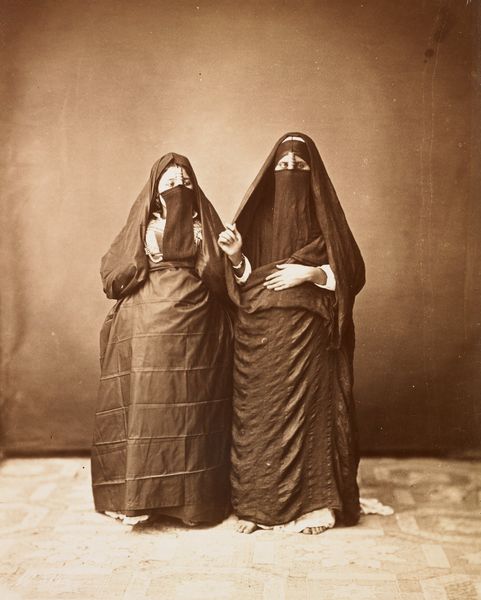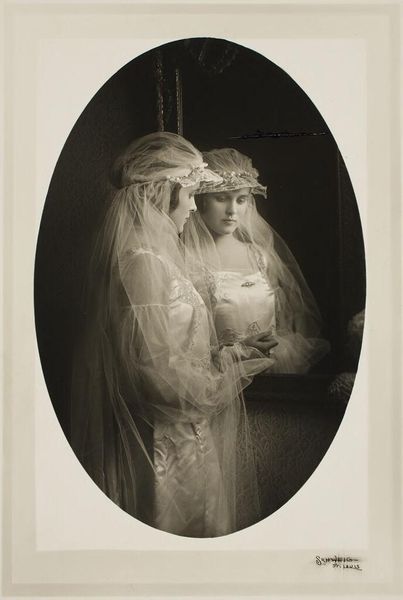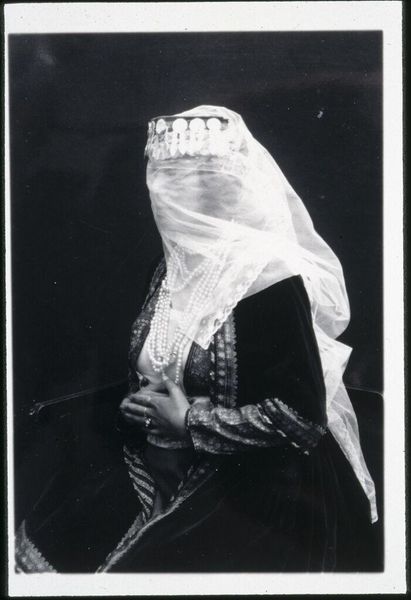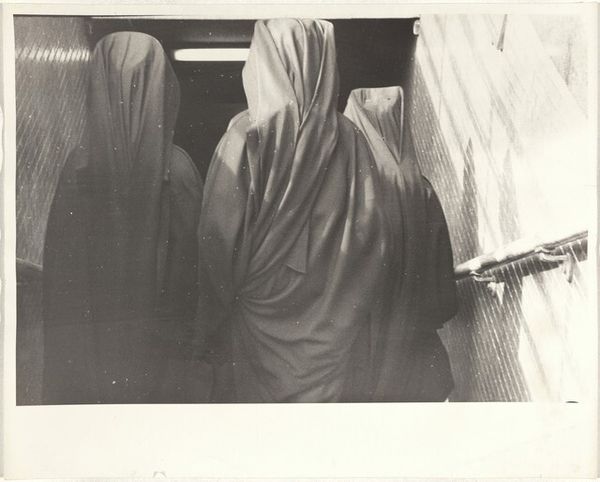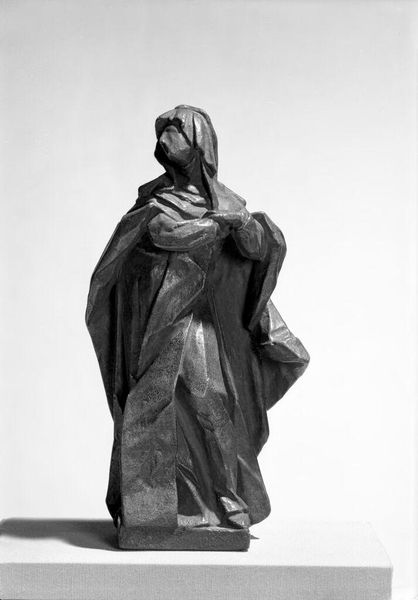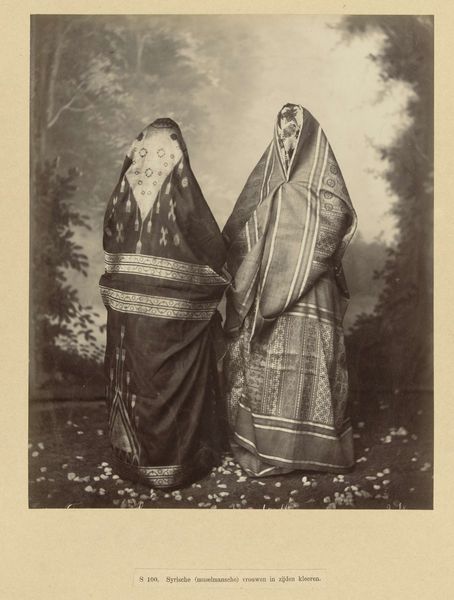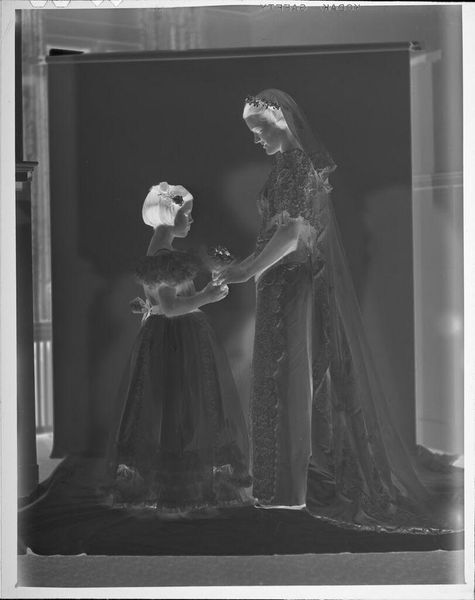
photography, gelatin-silver-print
#
portrait
#
african-art
#
black and white photography
#
black and white format
#
photography
#
black and white
#
gelatin-silver-print
#
monochrome photography
Dimensions: overall: 50.2 x 43.5 cm (19 3/4 x 17 1/8 in.)
Copyright: National Gallery of Art: CC0 1.0
Editor: So, here we have Irving Penn's gelatin silver print, "Two Guedras, Morocco," from 1971. It’s quite striking, almost spectral. There's something haunting in how the figures are draped. What do you see in this piece? Curator: Immediately, I'm drawn to the complex intersection of cultural representation and artistic agency in Penn's work. These Guedras, or veiled women, present us with layered questions about visibility, anonymity, and the gaze. It challenges us to consider how Western artists like Penn engage with, and sometimes exoticize, non-Western subjects. Who are these women beyond the veil? And what does it signify within their cultural context versus Penn's artistic interpretation? Editor: So, it's not just about the aesthetic of the photograph, but also about power dynamics? Curator: Precisely. The act of photographing itself involves power. Penn, as a Western photographer, is capturing these women, framing their image for a Western audience. We have to ask, are these women empowered or objectified by this representation? Is Penn offering a commentary, or simply perpetuating orientalist tropes? How do you read their body language? Is there a sense of defiance, of resilience? Editor: I see what you mean. It makes me question my initial interpretation and consider the implications of seeing these figures outside their cultural context. There is indeed something both compelling and problematic about this photograph. Curator: And that tension is precisely what makes it a powerful, albeit complicated, artwork. It encourages critical thinking about representation, cultural exchange, and the artist’s role in shaping our understanding of "the other." This photograph invites a deeper exploration of its historical and social context. Editor: Thank you! That's a totally different approach than what I had initially thought about when simply observing the image! Curator: These historical images are incredibly evocative starting points to further question today's societal context.
Comments
No comments
Be the first to comment and join the conversation on the ultimate creative platform.
